Weather Radio: all weather, all the time
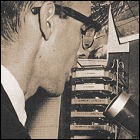 The U.S. Weather bureau signs on radio station KWO35, located at New York’s La Guardia Airport, broadcasting weather forecasts primarily for the benefit of pilots. Not targeted for public consumption, the experimental station broadcasts for several hours a day at a frequency of 162.55Mhz, outside of the spectrum reserved for FM radio. A similar station on the same frequency will later sign on at Chicago’s O’Hare Airport in 1953, again mainly for the consumption of airline pilots. Marine forecasts are added later, and the system helps the Weather Bureau prevent its local forecasters from being overwhelmed by requests for “personalized” weather reports for pilots. These two stations are the precursor for the nationwide weather radio network operated by the Weather Bureau’s successor agency, the National Weather Service.
The U.S. Weather bureau signs on radio station KWO35, located at New York’s La Guardia Airport, broadcasting weather forecasts primarily for the benefit of pilots. Not targeted for public consumption, the experimental station broadcasts for several hours a day at a frequency of 162.55Mhz, outside of the spectrum reserved for FM radio. A similar station on the same frequency will later sign on at Chicago’s O’Hare Airport in 1953, again mainly for the consumption of airline pilots. Marine forecasts are added later, and the system helps the Weather Bureau prevent its local forecasters from being overwhelmed by requests for “personalized” weather reports for pilots. These two stations are the precursor for the nationwide weather radio network operated by the Weather Bureau’s successor agency, the National Weather Service.

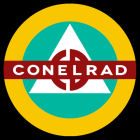 As a response to early Soviet atomic weapon tests, President Truman orders the initiation of the nationwide CONELRAD (Control of Electromagnetic Radiation) system, designed to limit the number of actively broadcasting radio stations whose signals could be used by enemy bombers to home in on and attack population centers. Designated AM radio stations would pass along emergency signals to smaller stations downstream, which would then begin a complex cycle of broadcasting emergency information to the public and then shutting down to allow another station to broadcast the same information; it is hoped that the rapidly shifting radio signals will prevent an invading enemy from finding viable targets. With its operating strategy assuming nuclear-armed Soviet bombers, CONELRAD will be rendered obsolete by the rise of the intercontinental ballistic missile by the end of the decade, and will be replaced by the Emergency Broadcast system in 1963.
As a response to early Soviet atomic weapon tests, President Truman orders the initiation of the nationwide CONELRAD (Control of Electromagnetic Radiation) system, designed to limit the number of actively broadcasting radio stations whose signals could be used by enemy bombers to home in on and attack population centers. Designated AM radio stations would pass along emergency signals to smaller stations downstream, which would then begin a complex cycle of broadcasting emergency information to the public and then shutting down to allow another station to broadcast the same information; it is hoped that the rapidly shifting radio signals will prevent an invading enemy from finding viable targets. With its operating strategy assuming nuclear-armed Soviet bombers, CONELRAD will be rendered obsolete by the rise of the intercontinental ballistic missile by the end of the decade, and will be replaced by the Emergency Broadcast system in 1963.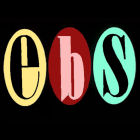 Radio and television stations across the United States begin mandatory participation in the national Emergency Broadcast System, a nationwide civil defense alert network replacing the CONELRAD system of the 1950s. Much like CONELRAD, EBS tests and activations initially require the rapid shutdown and reactivation of transmitters, at least until that practice is abolished in favor of a two-tone warning sound in the 1970s. Though the switch from CONELRAD to EBS is sparked by the
Radio and television stations across the United States begin mandatory participation in the national Emergency Broadcast System, a nationwide civil defense alert network replacing the CONELRAD system of the 1950s. Much like CONELRAD, EBS tests and activations initially require the rapid shutdown and reactivation of transmitters, at least until that practice is abolished in favor of a two-tone warning sound in the 1970s. Though the switch from CONELRAD to EBS is sparked by the 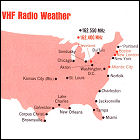 The U.S. Weather Bureau announces plans to expand its Weather Radio service across the country, with forecasts now prepared and worded for public consumption (as opposed to the service’s original 1950s mission of providing weather information for airline pilots). Concentrated primarily in coastal areas and a handful of inland population centers, the Weather Radio network has yet to become the Bureau’s primary means of disseminating emergency weather information, a mission it won’t take on until the 1970s.
The U.S. Weather Bureau announces plans to expand its Weather Radio service across the country, with forecasts now prepared and worded for public consumption (as opposed to the service’s original 1950s mission of providing weather information for airline pilots). Concentrated primarily in coastal areas and a handful of inland population centers, the Weather Radio network has yet to become the Bureau’s primary means of disseminating emergency weather information, a mission it won’t take on until the 1970s.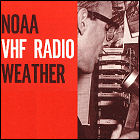 The National Weather Service’s NOAA Weather Radio system finally finds its purpose with the introduction of a piercing “warning tone” preceding emergency weather announcements such as severe weather warnings. Manufacturers of weather radio receivers (an item which hit the market in
The National Weather Service’s NOAA Weather Radio system finally finds its purpose with the introduction of a piercing “warning tone” preceding emergency weather announcements such as severe weather warnings. Manufacturers of weather radio receivers (an item which hit the market in 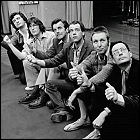 With the BBC giving his creation a late-night time slot indicating that they don’t really know what to do with it, Douglas Adams bursts onto the scene with the
With the BBC giving his creation a late-night time slot indicating that they don’t really know what to do with it, Douglas Adams bursts onto the scene with the 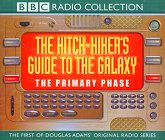 The
The 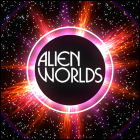 The
The 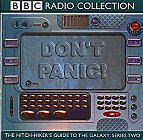 The
The  The
The